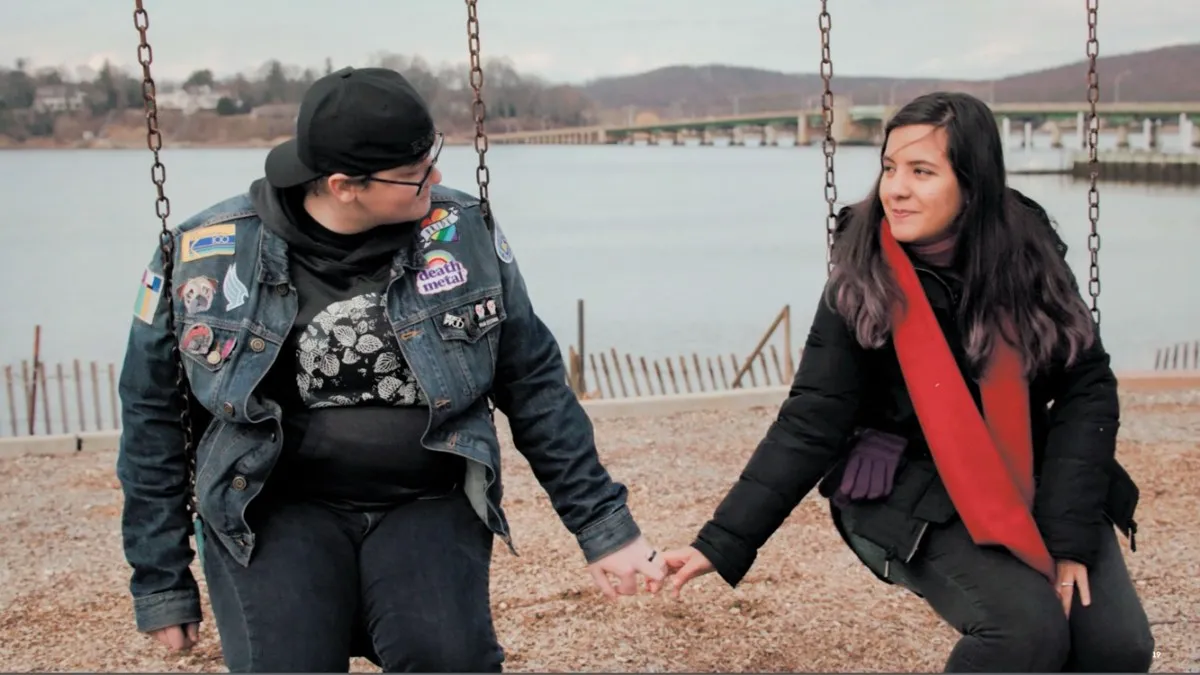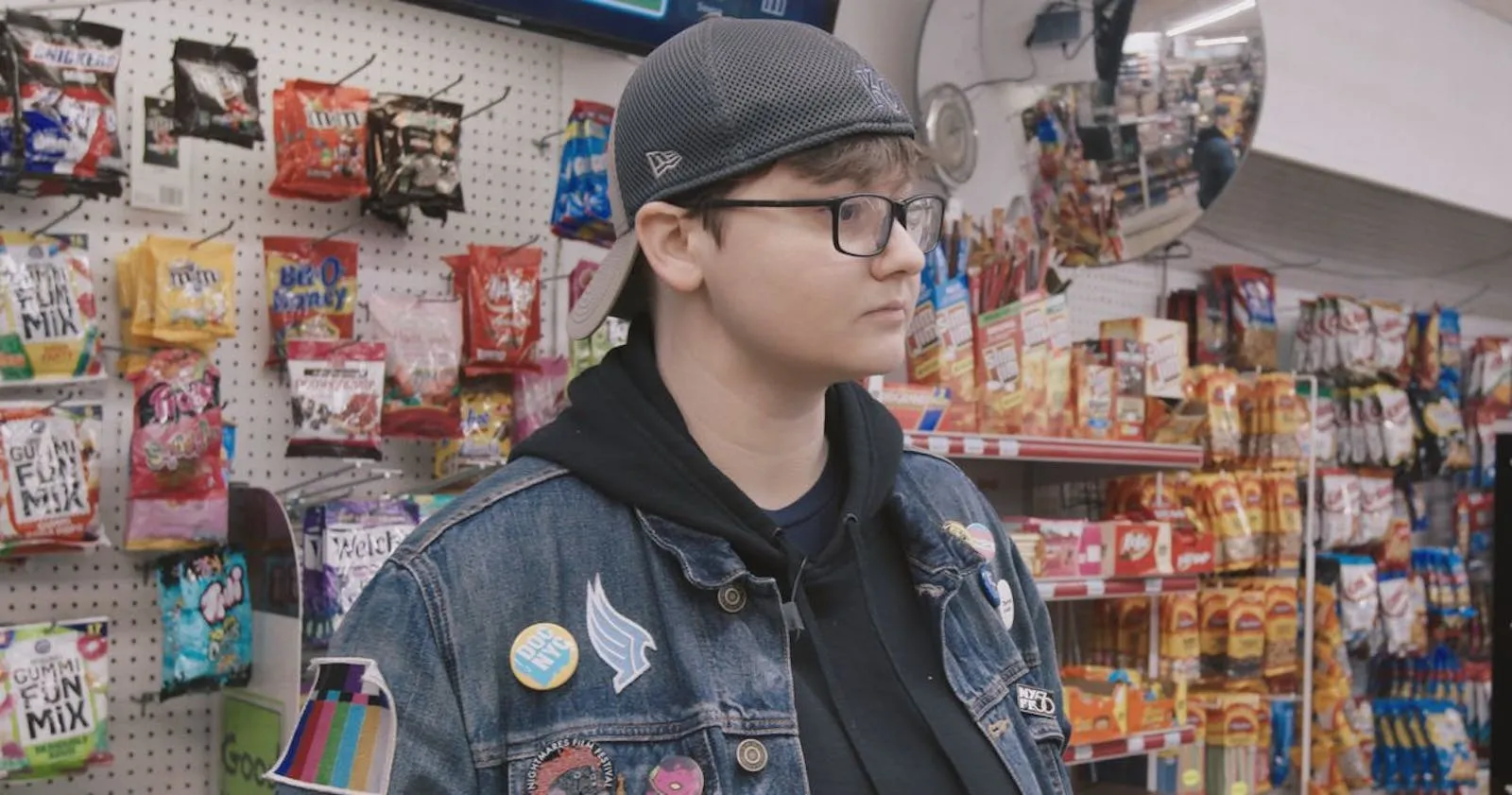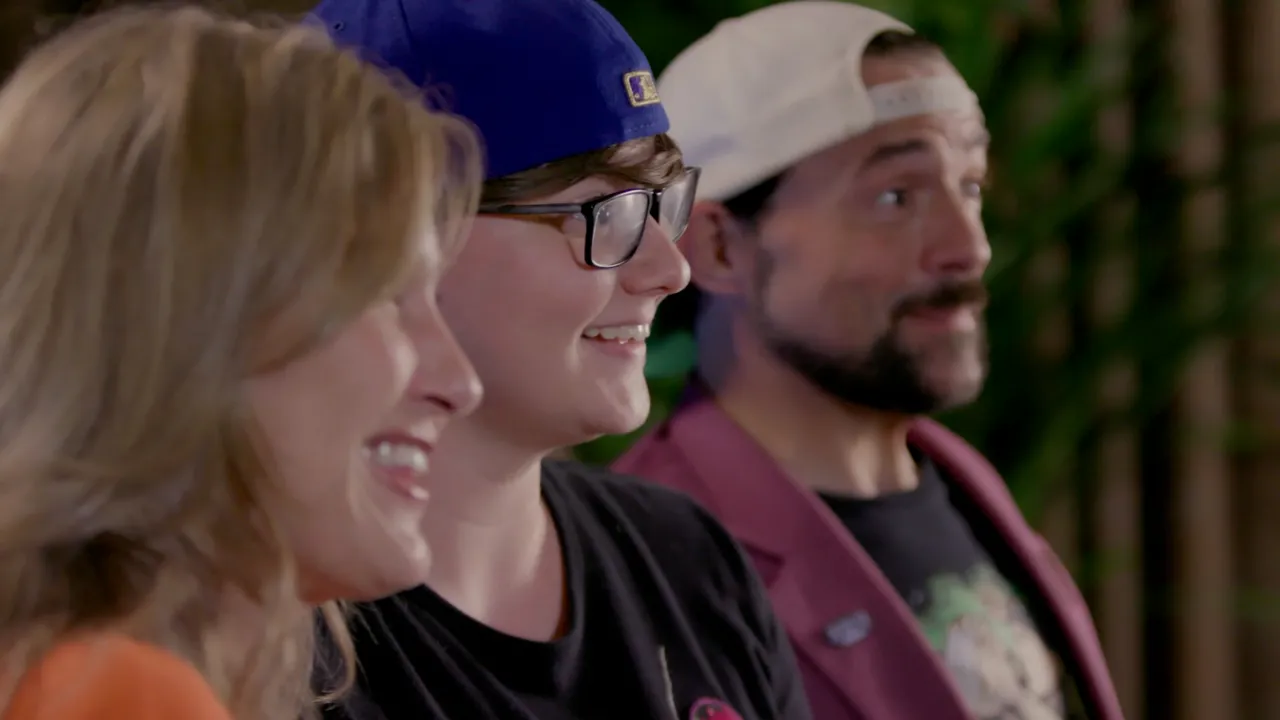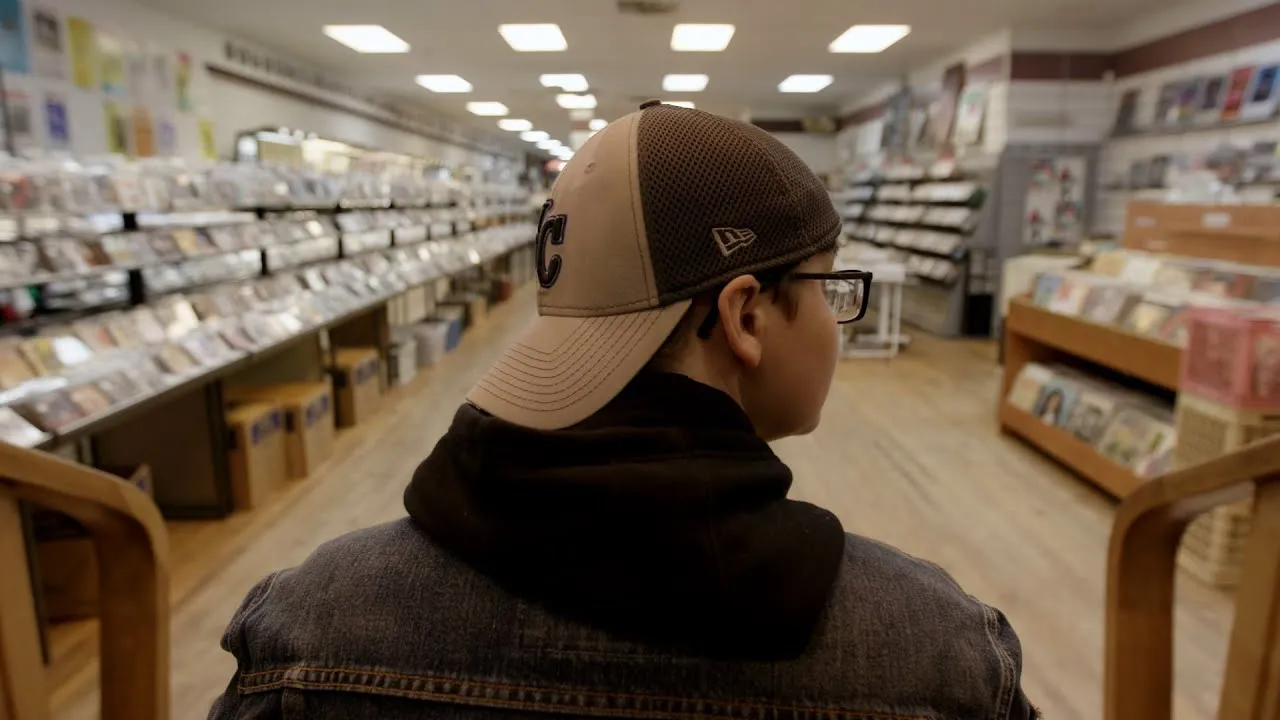In “Chasing Chasing Amy,” Sav Rodgers takes a journey that goes beyond fandom, examining the complex web that Kevin Smith’s 1997 film woven. This documentary acts as a mirror, reflecting the film’s narrative and the intricate emotional landscapes of its viewers, particularly those from disadvantaged groups.
The coming-of-age story of transgender filmmaker Rodgers is connected to Smith’s work. Rodgers has dealt with bullying and isolation in the past, and “Chasing Amy” has been both a lifeline and a cultural reference for her. This isn’t just a personal investigation; it’s an attempt to question representation—how a film can comfort some while reinforcing damaging stereotypes for others.
The documentary asks what it means to find yourself in a narrative that wasn’t entirely written for you through candid interviews with Smith and Joey Lauren Adams. Rodgers invites viewers to engage with the ramifications of a straight male director’s perspective on queerness as he interweaves his narrative with societal critiques. This makes “Chasing Chasing Amy” more than just a tribute; it also serves as an important commentary on how cinema and real life interact.
Sav Rodgers: A Personal Journey Through Identity and Reflection
A lifeline thrown into the rough seas of adolescence, “Chasing Amy” was more than just a film for Sav Rodgers. The film gave him a shred of recognition in a media environment that is frequently devoid of queer representation because he grew up in a conservative Kansas town where being different felt like wearing a shameful neon sign.
(What a funny thing that a straight man’s dream turned into a gay icon!) Alyssa, played by Joey Lauren Adams, became a sign of hope because she was a proud lesbian who had to deal with a world that often misrepresented her.
The film’s narrative and Rodgers’ coming-out story are intertwined, highlighting the frequently contradictory relationship between art and identity. The film “Chasing Amy” helped him navigate the complexities of his sexuality.
The film’s examination of love, desire, and the fluidity of identity struck a deep, if imperfect, chord during a time when LGBTQ+ exposure was limited. Amid the bullying and loneliness Rodgers experienced, it became a source of comfort for him and helped him develop a deeper understanding of himself.
Rodgers was still thinking about the film’s flaws as he made the change. In addition to accepting his identity, his journey of self-discovery also involved making peace with the problematic images in the film. This tension is depicted in the documentary, which also shows that his change is more than just a personal growth but also a comment on the fluidity of identity.
Rodgers’s life is much like the story “Chasing Amy,” in which societal standards and personal insecurities make love harder. The film explores bisexuality, toxic masculinity, and the often stifling limits of heteronormative narratives, and his narrative is intertwined with these themes. The journey of understanding who we love and who we are allowed to be is thus transformed into a meta-commentary in “Chasing Chasing Amy.”
Cultural Reflection on “Chasing Amy”: A Mirror to the Past
“Chasing Amy” emerged in the late 1990s, when LGBTQ+ representation in mainstream cinema was as hard to come by as a needle in a haystack. Kevin Smith’s film was groundbreaking but had some serious flaws. Its blend of romantic comedy and sincere identity study made it a difficult watch.
The film introduces a lesbian character who falls in love with a straight guy in the end. This reinforced the idea that every lesbian is only a few heartfelt monologues away from having heterosexual sexuality. Even though it may have good intentions, this narrative fits with a larger trend in society to simplify queer identities so they are easier for mainstream audiences to understand.
The importance of the film cannot be overstated; it allowed for a previously closed-door conversation about sexuality. It did, however, leave us with a question: at what cost? The problematic parts of “Chasing Amy” are still relevant today and warn us how far we’ve come and still need to go. For instance, the portrayal of bisexuality in the film was, at best, hazy, frequently reducing complicated identities to simple story devices.
“Chasing Amy” is a cultural item from a different time that we can use to understand how people talk about sexuality today. The documentary “Chasing Chasing Amy” deals with this legacy thoughtfully, encouraging viewers to reconsider the film’s effect through a contemporary lens. The need for intersectionality in narratives that claim to tell our stories is highlighted, and it challenges us to reflect on the changing views surrounding queer representation.
The documentary shows how the film’s initial reception led to conversations about identity, love, and the fluidity of desire through interviews and personal stories. It makes us rethink our understanding of sexuality and representation by contrasting the past and present. “How do we reconcile our nostalgia for a film that saved and messed up lives?” By doing this, it shows how views toward LGBTQ+ people are changing over time, making it clear that “Chasing Amy” was just a starting point and not the end goal.
Interviews and Insights from Key Figures: Voices of Reflection
Kevin Smith gives an honest and often funny account of how “Chasing Amy” was made and how people responded to it. He recognizes the film’s dual nature as a romantic comedy that appealed to viewers and caused controversy due to its portrayal of LGBTQ+ relationships.
Smith’s thoughts reflect a blend of pride and humility as he deals with the effects of a film that launched his career and also embodies the more problematic attitudes toward sexuality of the time. It’s like seeing stand-up comedy where the joke is about being aware of oneself.
Smith shows a tension that many creators experience when talking about accountability: how to balance past work with present values. He agrees that “Chasing Amy” was groundbreaking for its time, but it was also mainly made through the lens of heteronormativity.
His admission of these flaws represents a growing movement among artists to reevaluate their legacy in light of contemporary understandings of identity and representation. Smith’s willingness to engage in this dialogue is welcome and necessary, and his contributions to the documentary are an important part of its narrative.
The conversation is infused with a touching authenticity by Joey Lauren Adams. Her experiences on set are tinged with both pride and discomfort, revealing the complexities of playing a gay character while juggling a romantic relationship with the film’s director. The pressure of being judged by the lens of her on-screen persona rather than her real self is one of the challenges Adams candidly discusses. This double meaning highlights the struggles actors in similar situations face, where their professional parts can get mixed up with their own.
Another important character in this narrative, Guinevere Turner, gives the conversation more context. She sheds light on the complicated relationship between queer representation and mainstream cinema as a screenwriter and actress in the LGBTQ+ community. The paradox of being praised while feeling left out is captured by Turner’s reflections on how the film broke down barriers and reinforced damaging stereotypes. Her work is an important reminder that the conversation about representation is complex and that even well-intentioned narratives can fall short.
This film, “Chasing Chasing Amy,” not only looks back at the past through these interviews but also shows how representation in movies is changing over time. The voices of Smith, Adams, and Turner collectively push audiences to engage with the complexities of identity, accountability, and the power of storytelling in influencing societal perceptions.
Critical Themes Explored in the Documentary: Navigating Complexity
The complex themes of sexuality and identity are explored in “Chasing Chasing Amy,” with a special emphasis on Kevin Smith’s original film’s portrayal of bisexuality and LGBTQ+ problems. The documentary poses important questions about the straight male gaze, a lens that frequently shapes narratives in ways that can exclude queer experiences.
Even though Smith’s film is supposed to be about love, it frequently plays with problematic tropes, like the notion that love can “convert” someone or that bisexuality is just a phase. Even though this portrayal was groundbreaking at the time, it runs the risk of perpetuating simple narratives that don’t show how complex queer identities are. Making a Rubik’s Cube fit into a square peg is like that.
The emotional depth of the relationships in both films is a microcosm for more general social problems. The documentary shows how important these relationships are, not just romantic ones but also reflections of social norms and personal insecurities. The emotional stakes are palpable in a world that frequently fights to comprehend the fluidity of love and attraction action. This battle mirrors what many people go through as they try to figure out who they are in a society that often wants things to be clear and consistent.
“Chasing Chasing Amy” encourages viewers to reflect on the larger implications of how stories affect our understanding of love and identity by examining the interaction between personal relationships and societal pressures. It stresses that the emotional journeys depicted on screen are not just made-up narratives; they are deeply connected to many people’s real-life experiences, frequently revealing the deep complexities beneath the surface of romantic ideals.
Filmmaking Style and Structure: Weaving Threads of Narrative
The narrative style of “Chasing Chasing Amy” is elevated above simple retelling by using a rich tapestry of documentary methods. Personal storytelling is interspersed with old video from “Chasing Amy,” and the editing is precise and on purpose.
Putting the past and present together creates a dialogue that lets viewers see how the film and its cultural effect have changed over time. Including personal stories adds a layer of authenticity, turning the documentary into a reflective mirror where individual experiences stand out against the background of shared memories.
Sav Rodgers’ journey is intertwined with larger criticisms of social norms, and the film expertly balances personal and cultural narratives. Thanks to this dual focus, the documentary becomes a lens through which viewers can study the complexities of LGBTQ+ representation, which ensures that it is more than just a personal memoir.
The documentary turns what could have been a single narrative into a multifaceted study of identity and belonging by fusing personal reflections with cultural commentary to spark conversations about narrative, accountability, and the power of storytelling.
The Legacy of “Chasing Chasing Amy”: A Call to Reflect and Engage
“Chasing Chasing Amy” adds a lot to the ongoing conversations about representation in cinema, especially regarding LGBTQ+ narratives. It shows how past films can support and undermine marginalized voices in story telling, highlighting the need for authenticity.
This documentary opens up a necessary dialogue about the complexities of identity by critically engaging with “Chasing Amy.” It shows that representation is not just about being seen; it’s also about the depth and nuance of those portrayals. (It’s like understanding that a rainbow on the poster doesn’t mean everyone can enjoy the story.)
These documentaries are very important in today’s political and social environment, where arguments about identity and representation are as heated as ever. They urge audience members to question the narratives they consume as well as introspection.
In order to recognize that the conversations regarding these films go beyond the screen, viewers are asked to engage critically with both “Chasing Amy” and its documentary counterpart. Think about how stories affect our understanding of community, belonging, and love in a world that is becoming more divided. This way, instead of passively enjoying entertainment, we become active players in the ongoing search for real representation and understanding.
The Review
Chasing Chasing Amy
The movie "Chasing Chasing Amy" does a great job of navigating the complicated issues of LGBTQ+ identity and representation by putting together powerful personal narratives with criticisms of society at large. The documentary encourages viewers to reconsider Kevin Smith's original film's cultural ramifications while recognizing its flaws through insightful interviews and a reflective lens. A critical engagement with the stories we tell is encouraged by this exploration, which is both timely and important.
PROS
- Thought-provoking exploration of LGBTQ+ representation.
- Insightful interviews with key figures, adding depth to the narrative.
- Balances personal stories with broader cultural critiques.
- Engages with the historical context of the original film.
- Encourages critical reflection on identity and storytelling.
CONS
- Some may find the pacing uneven.
- Occasional reliance on nostalgic elements that could overshadow critical analysis.
- Limited focus on certain intersections within the LGBTQ+ community.





















































